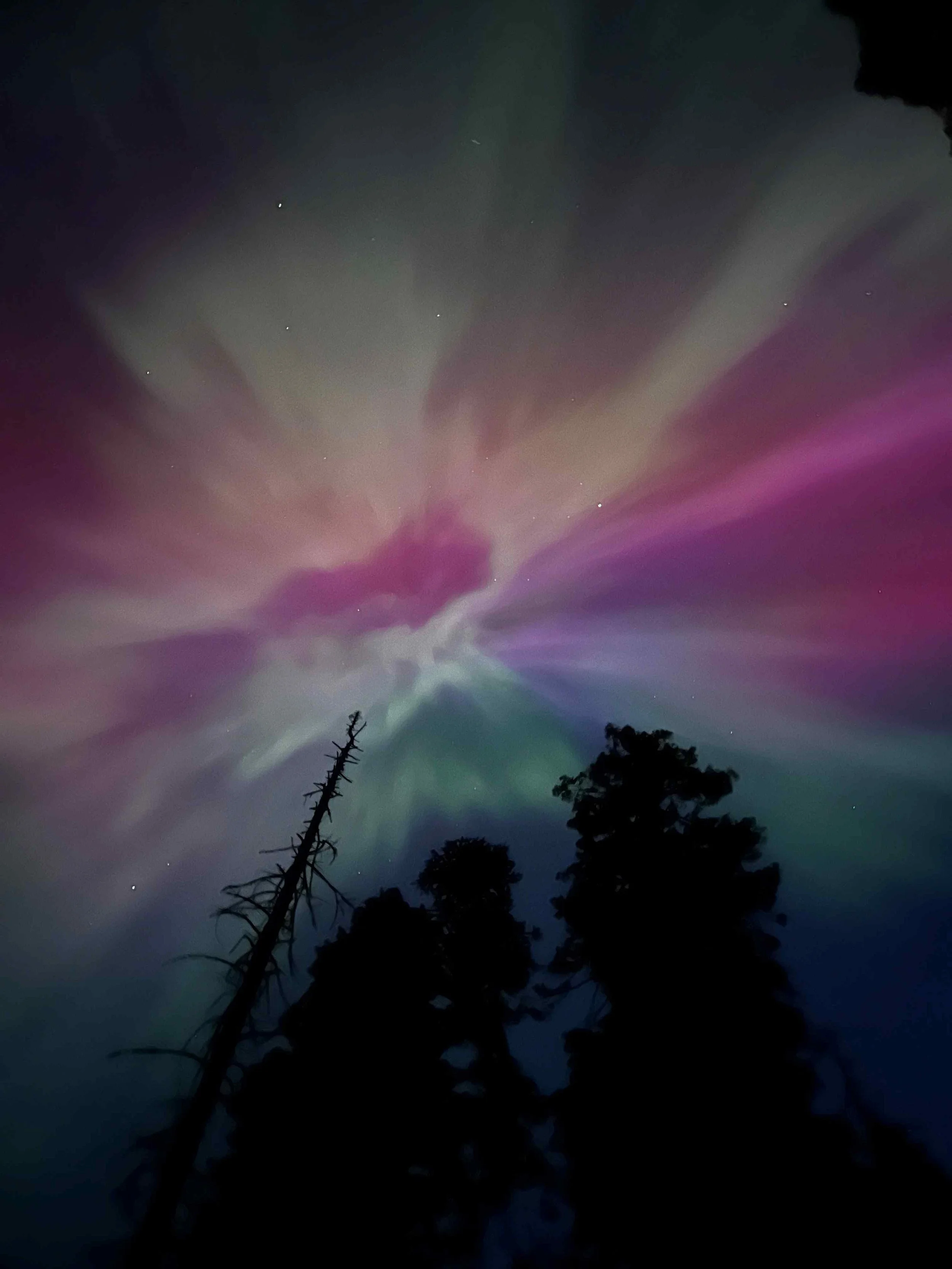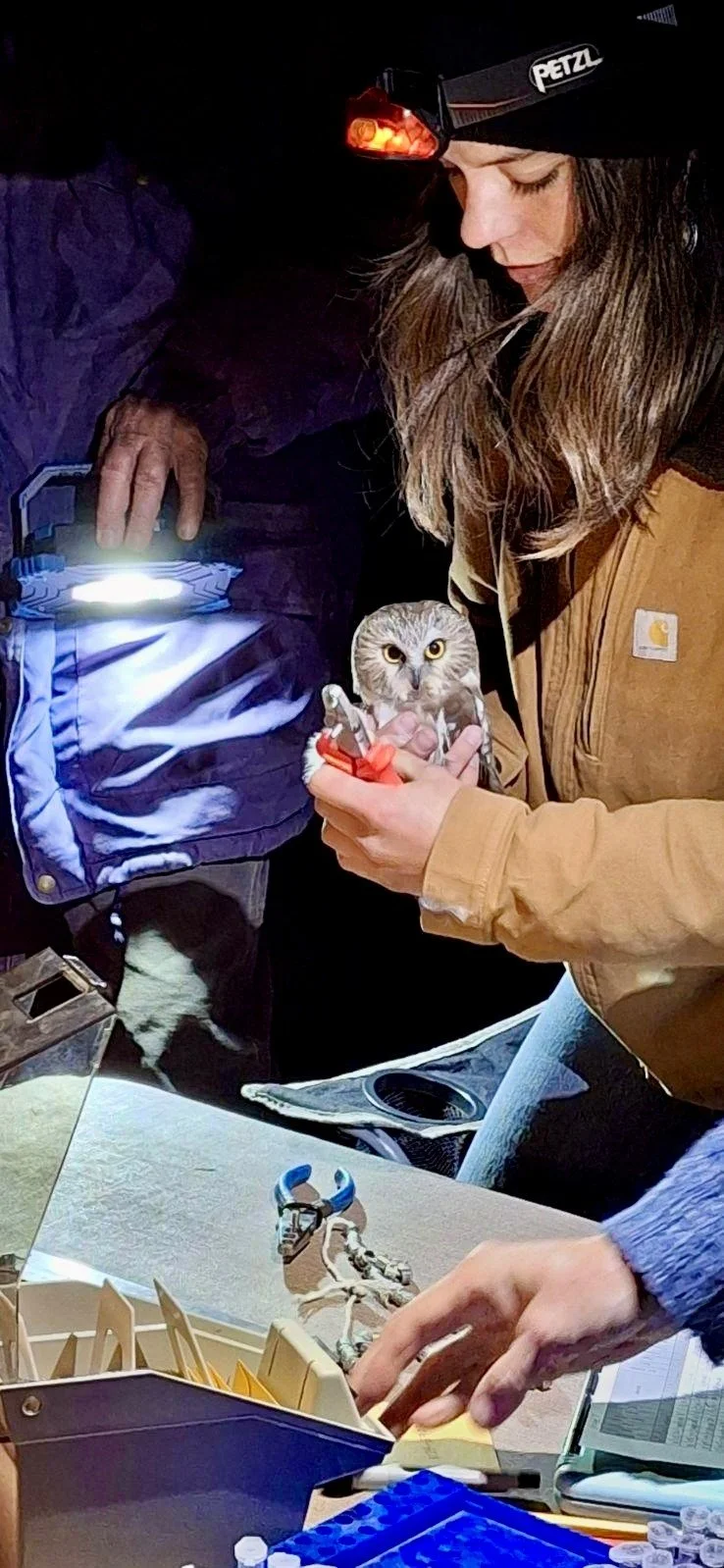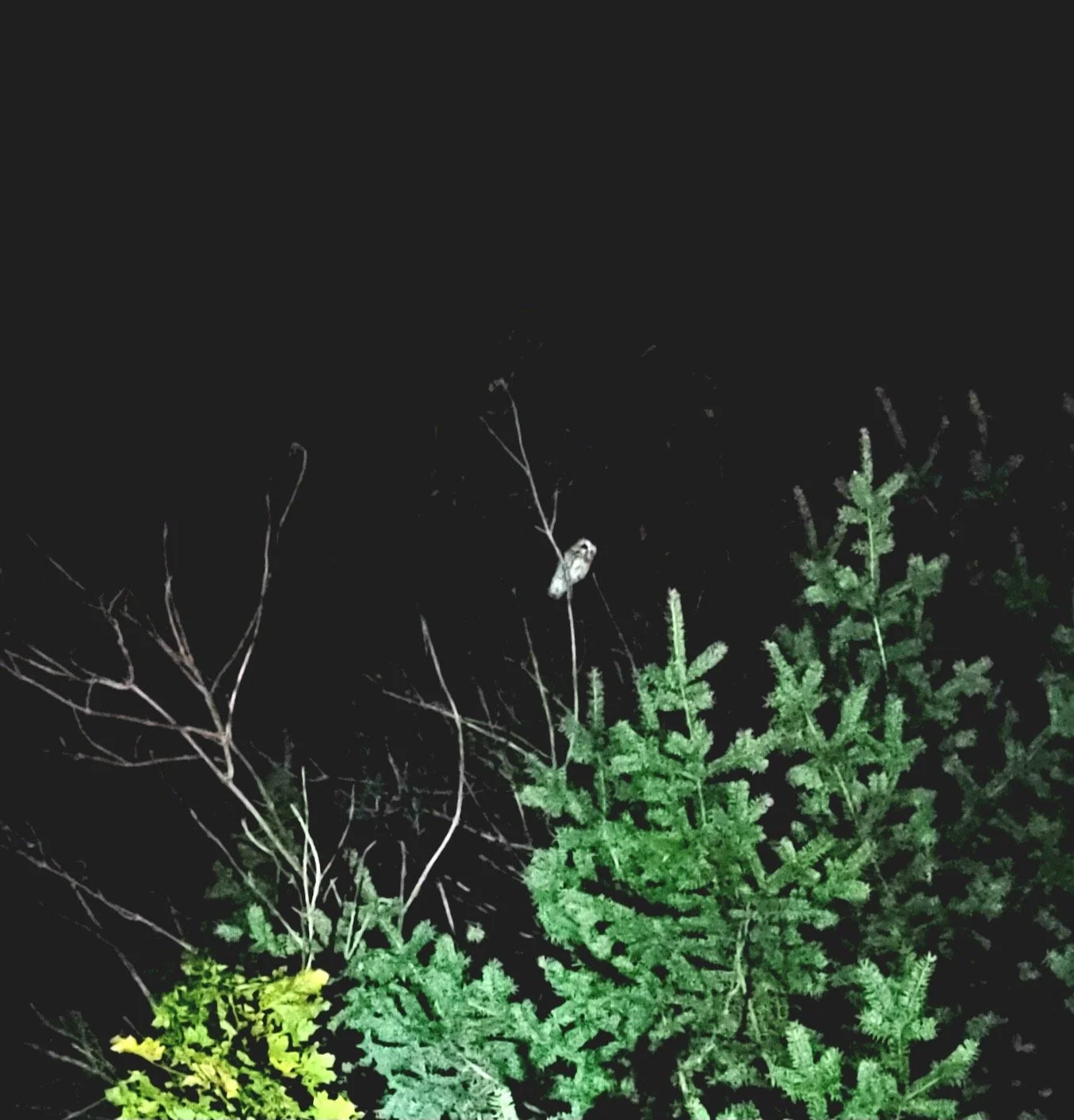Owl Research Institute Field Trip Report
By Member Lisa Clark
On October 10, 2024, fourteen members of the Coeur d’Alene Audubon chapter embarked on an exciting field trip to the Flathead Lake Biological Station, the outdoor lab/field location for the Owl Research Institute located in nearby Charlo, MT. Founded by Denver Holt in 1988, the Owl Research Institute is a 501(c)3 nonprofit organization dedicated to the long-term research of owls and their behaviors. This research has contributed significantly to the scientific community’s understanding of owl migration and nesting behavior and is internationally recognized as an authority on owl research.
Our group was treated to a first-hand experience with the owl banding process for Northern Saw-whet Owls. The evening started with staff setting up nets along the edge of Flathead Lake and broadcasting the Saw-whet call to attract the birds. While waiting, we gathered around the campsite as Denver provided an informative overview of the Saw-whet’s behavior and the Owl Research Institute’s long-term projects. He also charmed and captivated us by singing/calling a number of owl calls.
Aurora Borealis at Flathead Lake Bio Station
As the sky darkened, we were fortunate to witness an unexpected and spectacular display of the aurora borealis, which lasted throughout the evening. The weather was mild, and the trees around us provided shelter, making our four hours in the field quite comfortable. We enjoyed discussions with the team and fellow chapter members, all under the stunning lights of the northern sky.
During the evening, three Northern Saw-whet Owls were captured. Field biologist Lauren Tate skillfully banded, weighed, and measured each bird, explaining the process as she worked. Two feather samples were taken from each owl for later analysis, helping the team determine the owls’ gender, among other data. Pat carefully recorded each detail while Denver provided fascinating commentary on the owls’ behaviors and released them once the data was collected.
Owl Research Institute Field Researcher Lauren Tate bands a Northern Saw-whet Owl.
These banding projects provide a wealth of information regarding the targeted species. In the case of the Northern Saw-whet Owl project, the researchers get data from band returns and recaptures as to where these birds go as they migrate and where they are seasonally. Data captured during banding provides information on population age structure, overall fitness and health of the birds, and molt timing. It also provides information on how juvenile owls disperse from their nesting areas and how healthy they are compared to the adults in the population. All of these kinds of data enhance our ability to understand the species and informs management decisions that may impact the birds.
The owls were notably docile throughout the banding process; low lights and Lauren’s gentle handling may have contributed to the species calm demeanor. Watching the owls fly smoothly back into the forest, especially one that briefly observed us from above before departing, was an awe-inspiring moment.
Banded and released Northern Saw-whet Owl takes a few moments to check us out before flying away.
While the scientific side of the evening was undoubtedly valuable, I must add something that may not make it into formal reports: Northern Saw-whet Owls are absolutely adorable! Their delicate features and small size make them a joy to behold up close.
My first encounter with the Owl Research Institute was in April 2019 when Denver Holt visited Coeur d’Alene and presented the monthly program to our chapter on “Adaptation in Owls”. Denver and his team have been banding owls as part of the fall migration season since 2010, with over approximately 1,800 owls banded to date. The rich dataset gathered from these banding efforts is analyzed by the institute and shared with the scientific community.
Denver mentioned the book, What an Owl Knows: The New Science of the World's Most Enigmatic Birds, by Jennifer Ackerman, that explores the biology, behavior, and conservation of owls. Ackerman spent time in the field with staff at the Owl Research Institute to explore how researchers are using modern technology to learn about owls and the institute is referenced throughout the book.
Thanks to Pam Gomes and Theresa Shaffer for their part in making this event happen. This field trip felt like a once-in-a-lifetime experience, where science and natural beauty combined in a truly unforgettable way.



